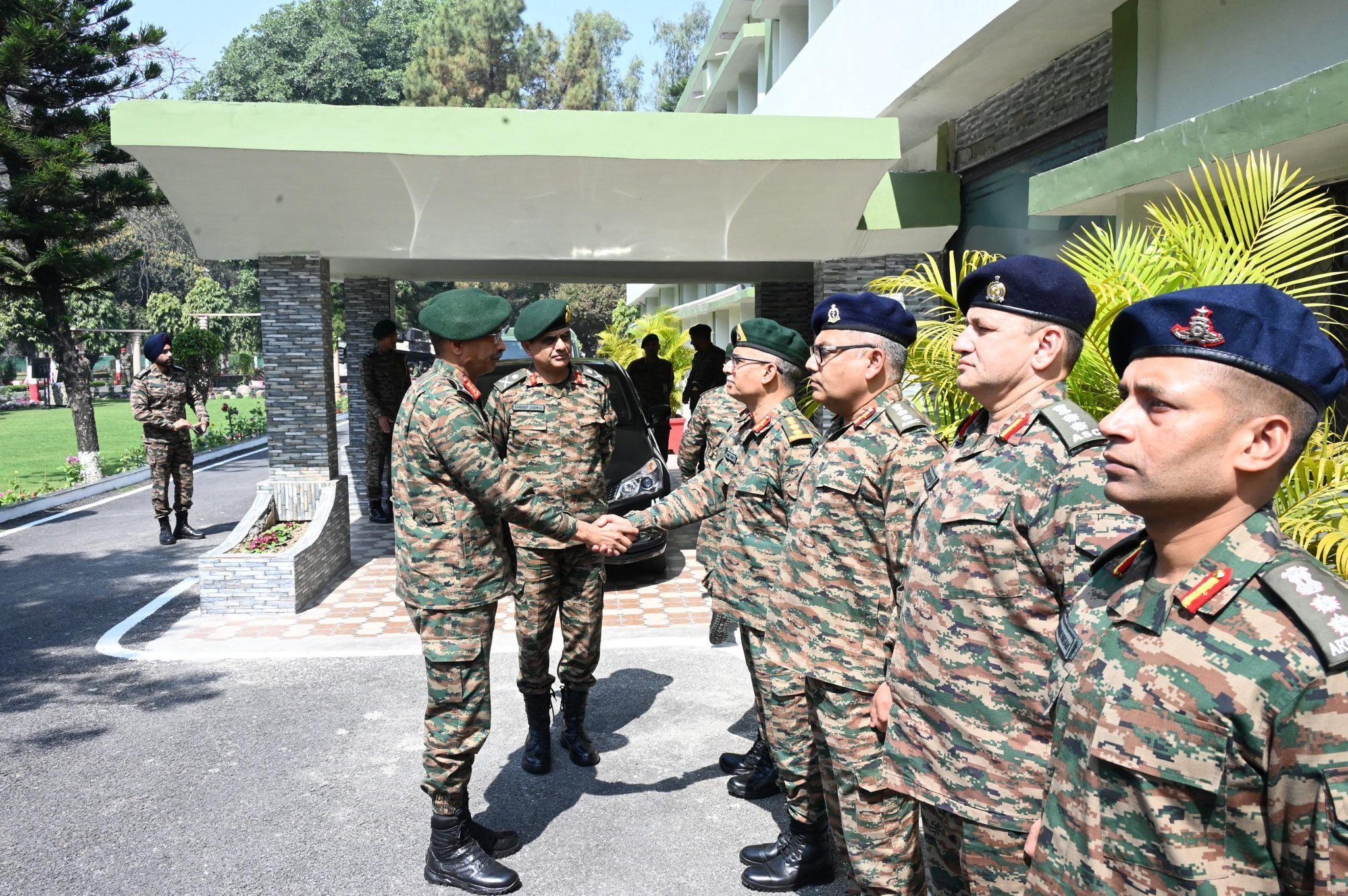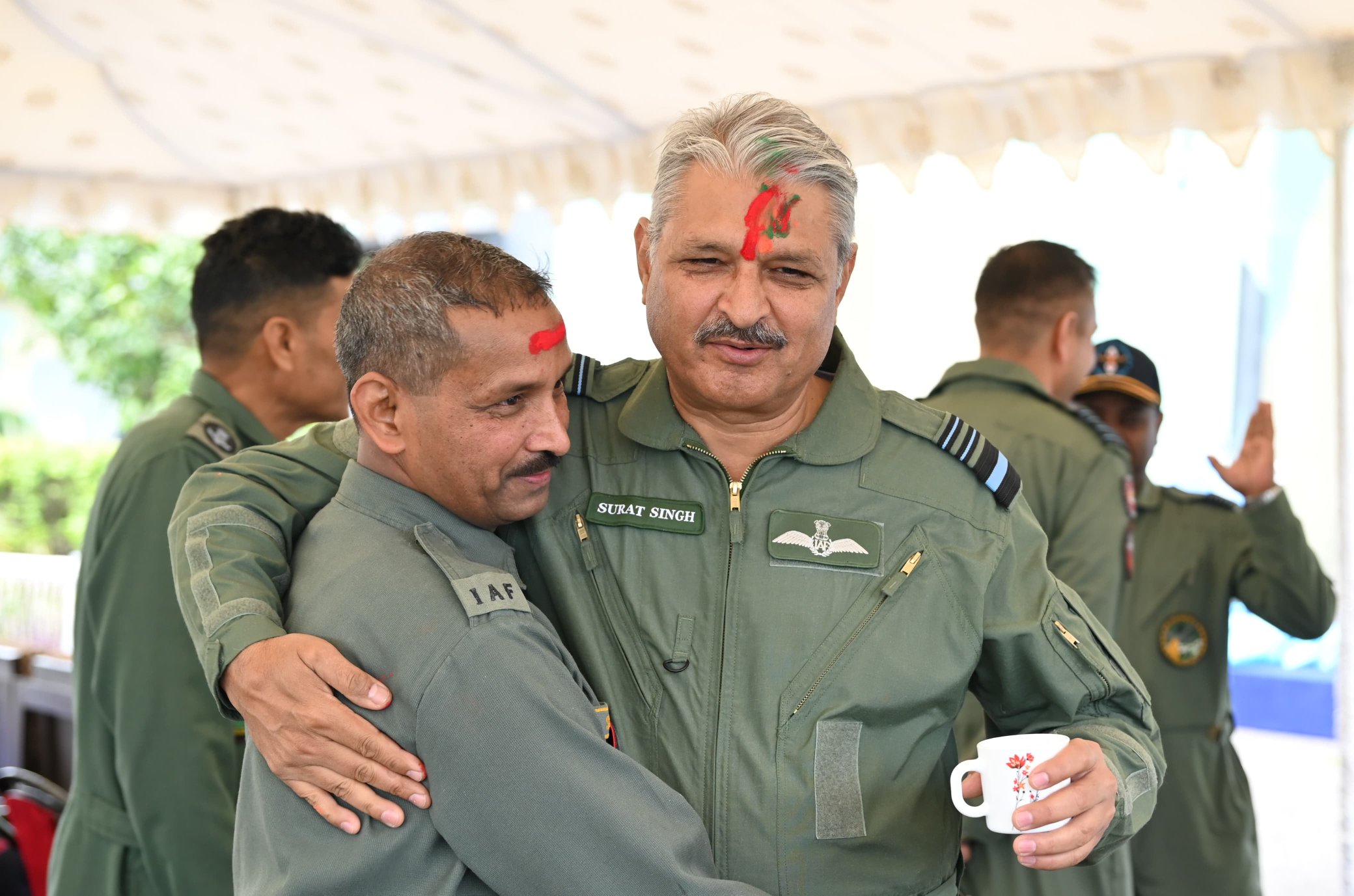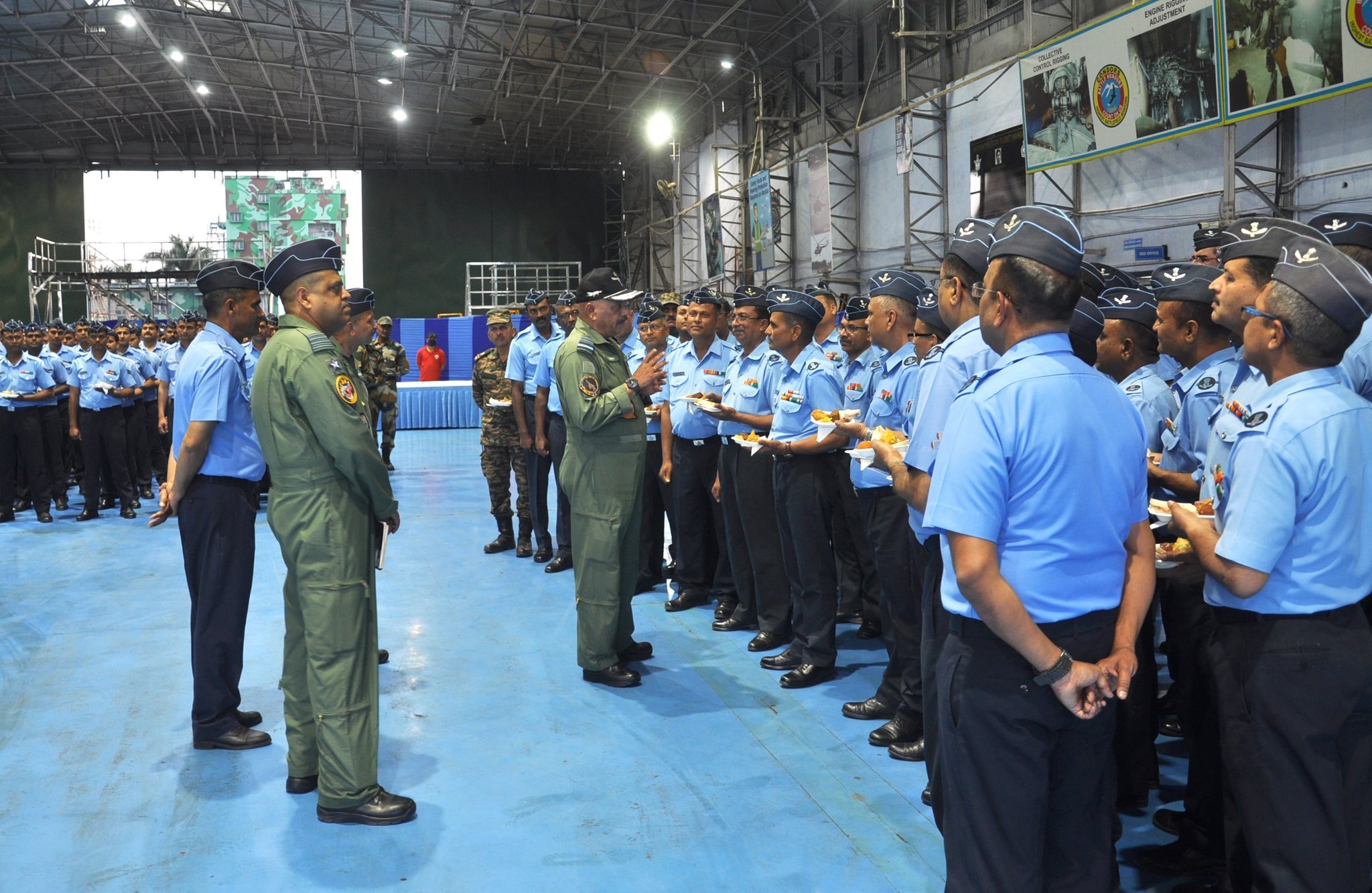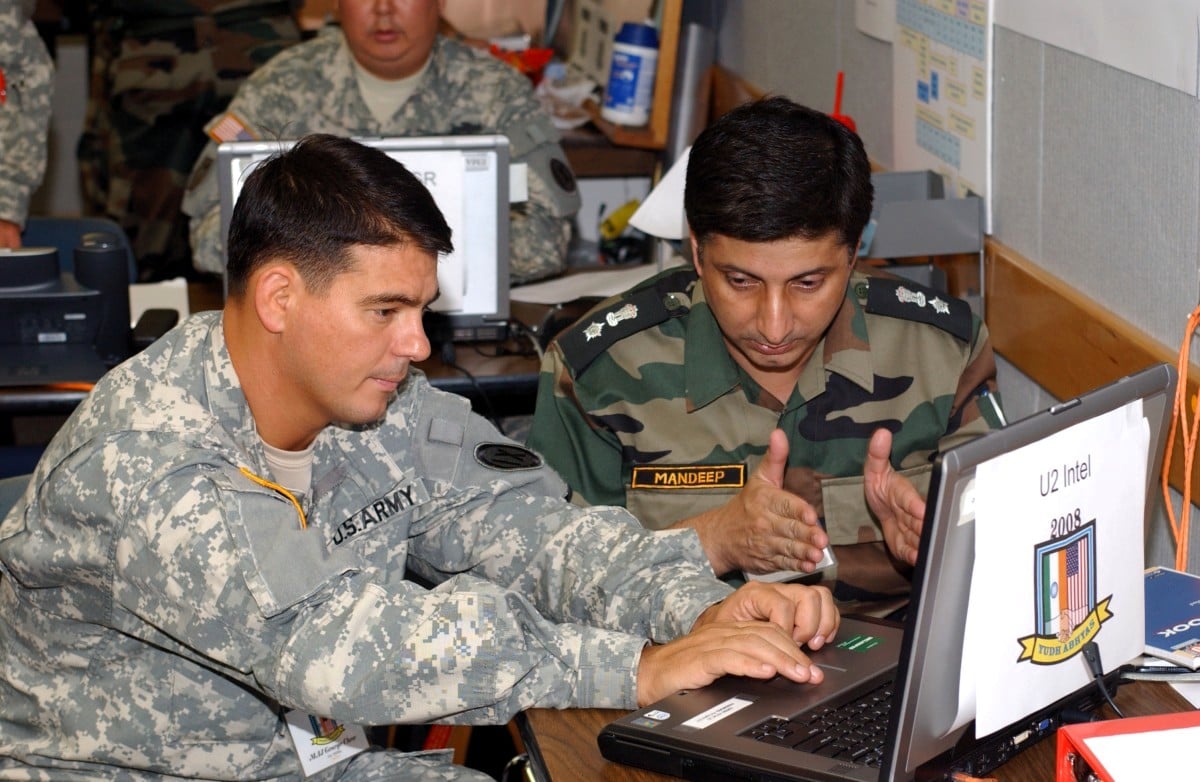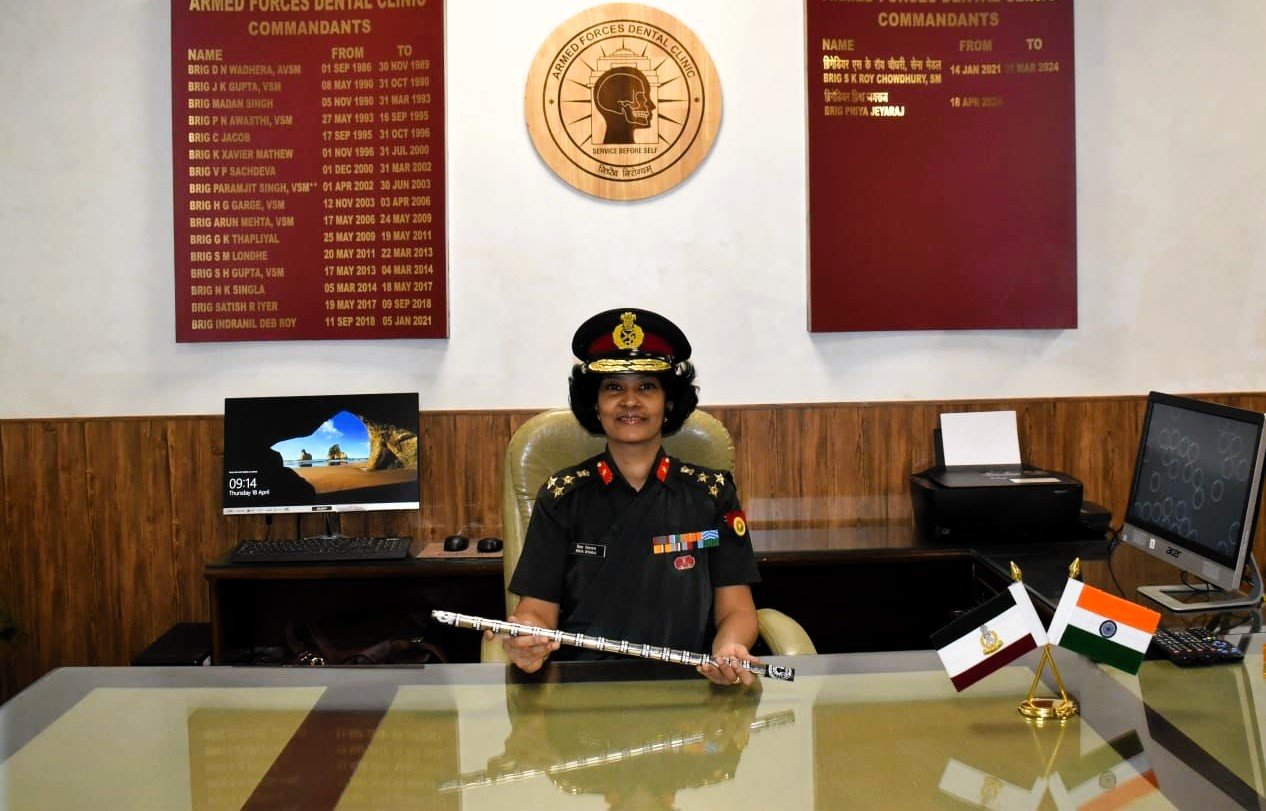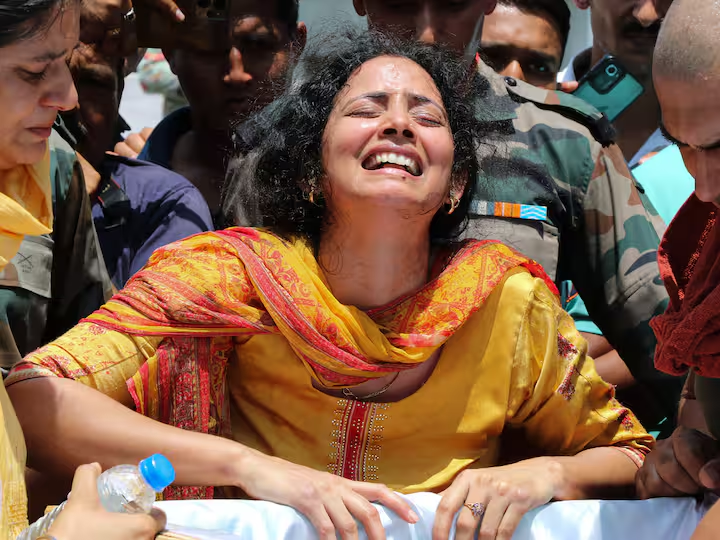Lt Gen MV Suchindra Kumar Visits Garud Division
March 13, 2025 – Lt Gen MV Suchindra Kumar, Army Commander, Northern Command (NC), conducted a visit to the Garud…
Air Marshal Surat Singh Celebrates Holi with Air Warriors in Forward Areas
Air Marshal Surat Singh, Air Officer Commanding-in-Chief (AOC-in-C), Eastern Air Command (EAC), Indian Air Force, celebrated Holi with Air Warriors…
Air Marshal Jeetendra Mishra Visits Forward Bases in the Western Sector
Air Marshal Jeetendra Mishra, Air Officer Commanding-in-Chief (AOC-in-C) of Western Air Command (WAC), Indian Air Force, conducted a strategic visit…
Why Indian Army Wear Ranks on the Shoulder?
The history of military insignia in India is rich and complex, reflecting the country's diverse cultural heritage and the evolution…
Meet Brigadier Priya Jeyaraj, First Woman Officer to Lead AFDC
Brigadier Priya Jeyaraj has made history by becoming the first woman officer to head the Armed Forces Dental Clinic (AFDC)…
7,40,766 Widows of Ex-Servicemen Registered for Welfare Schemes
Widows of Ex-Servicemen play a pivotal role in preserving the legacy and sacrifices of the Armed Forces. In recognition of…

